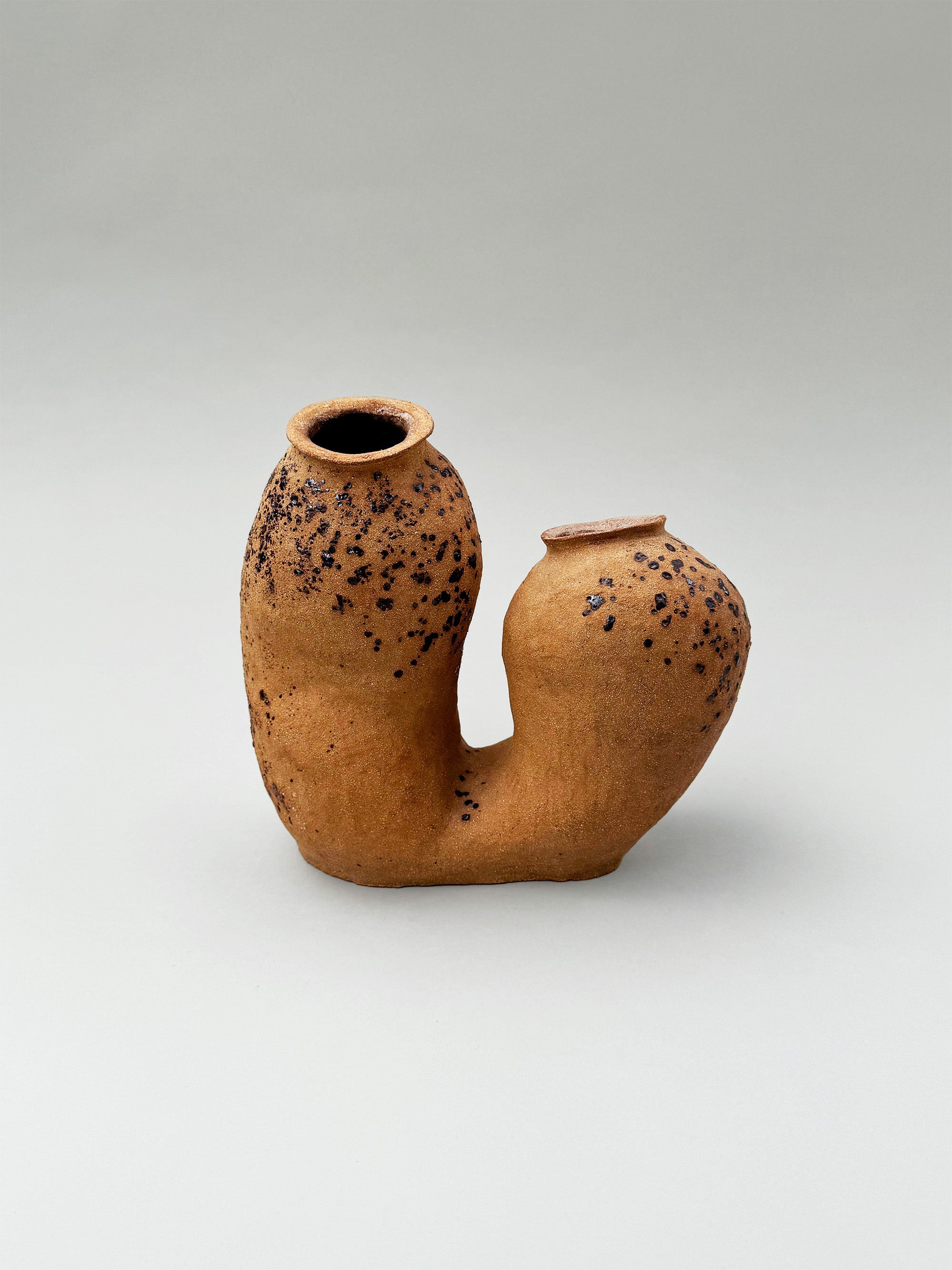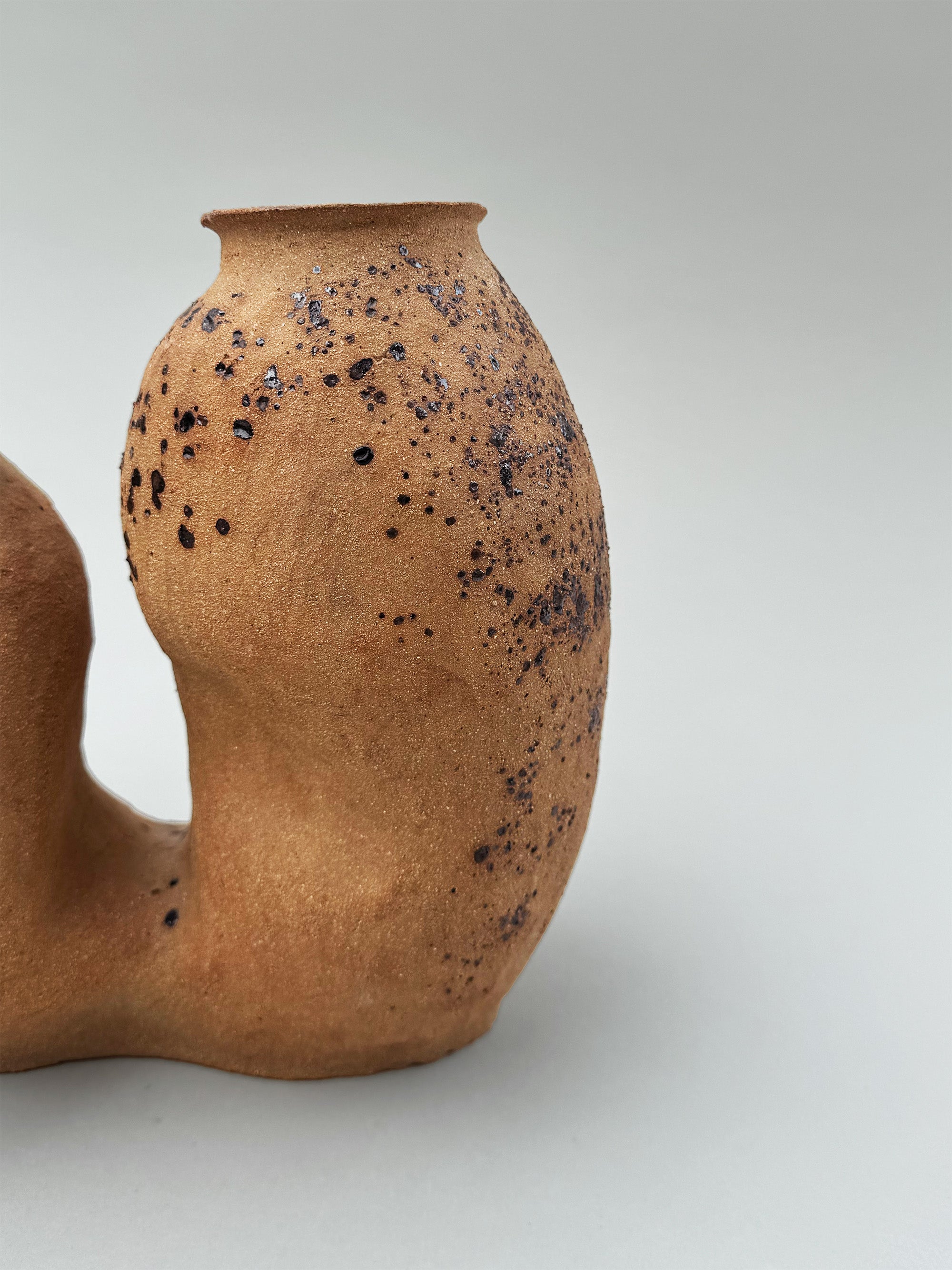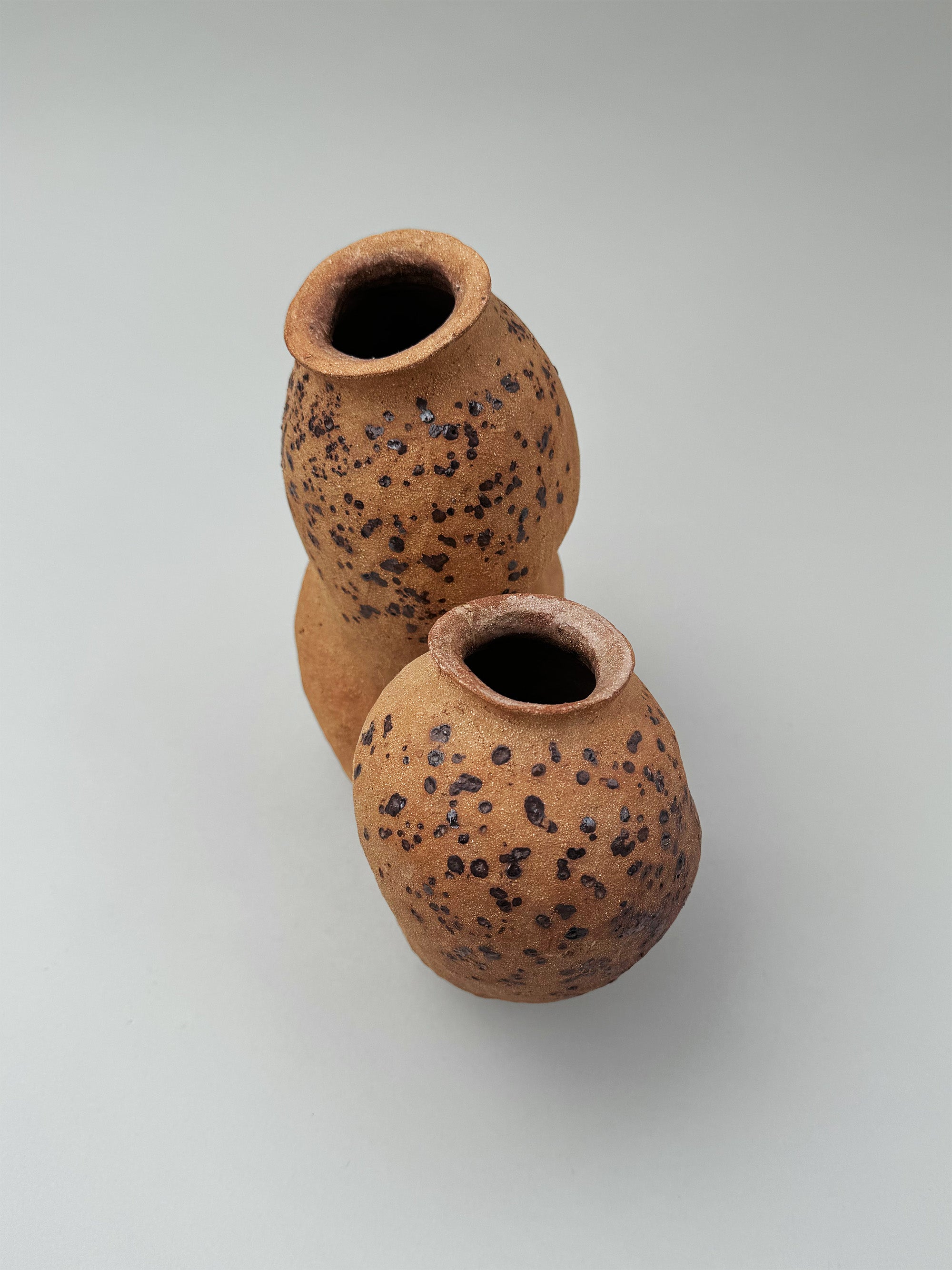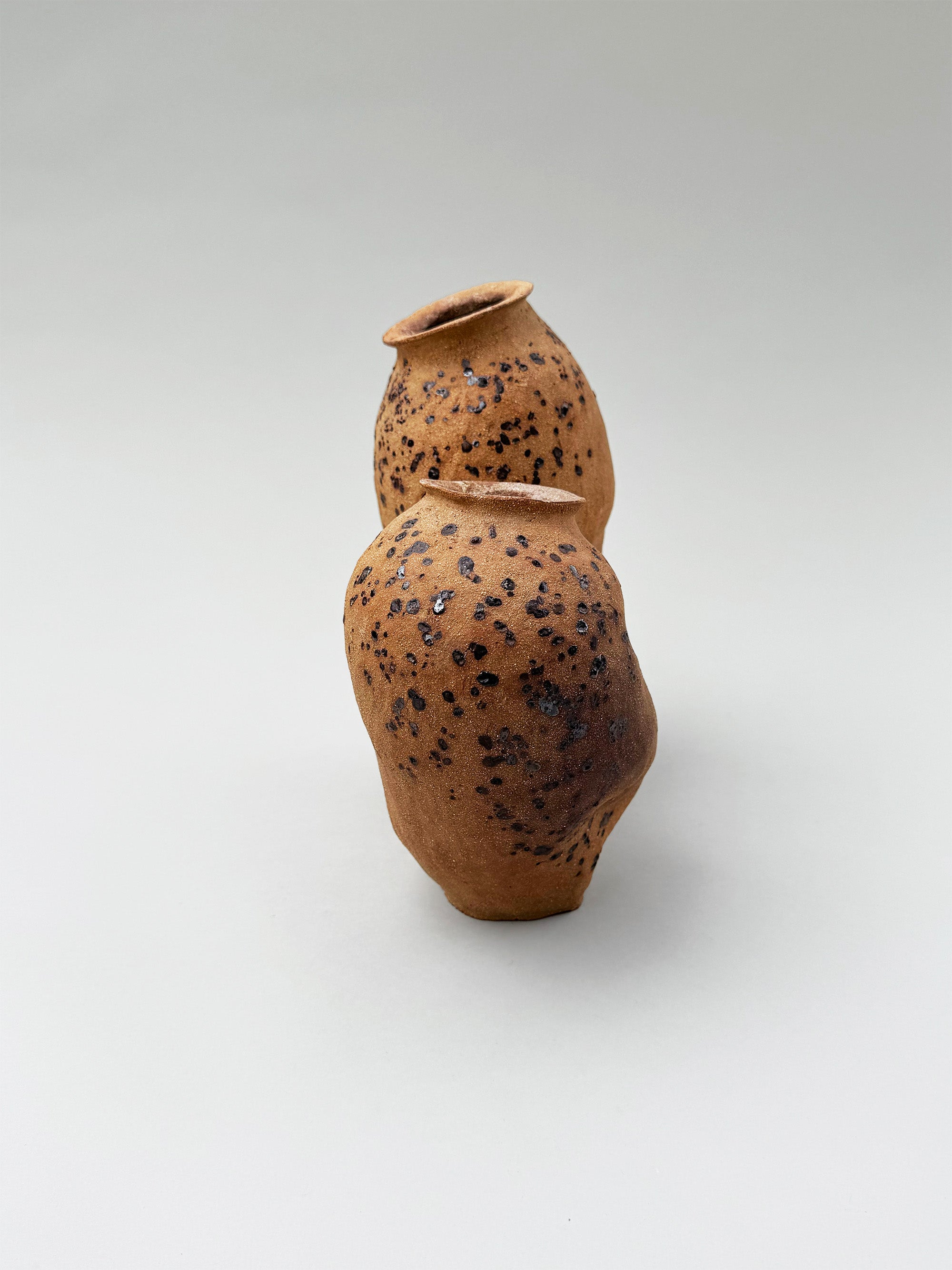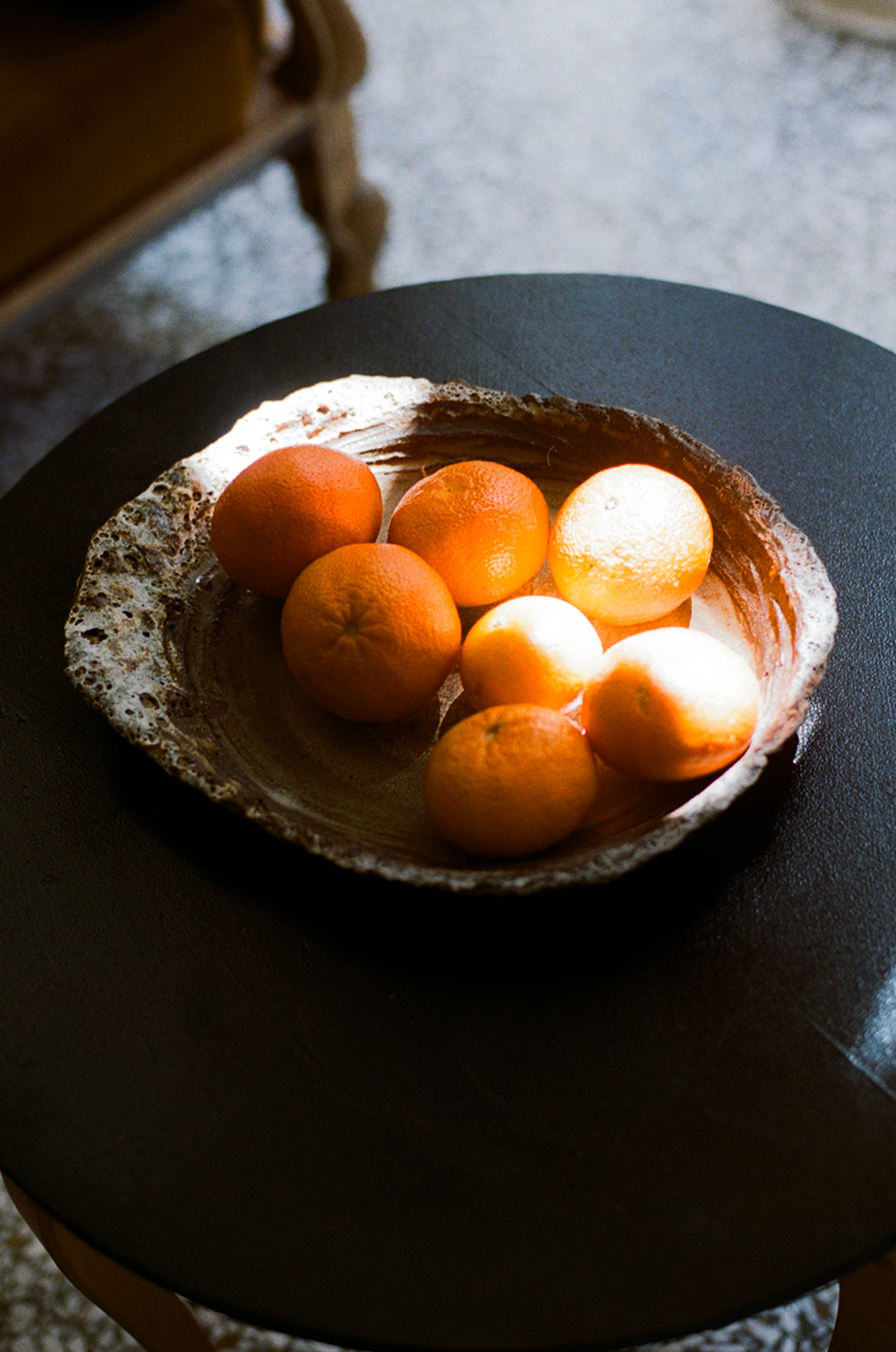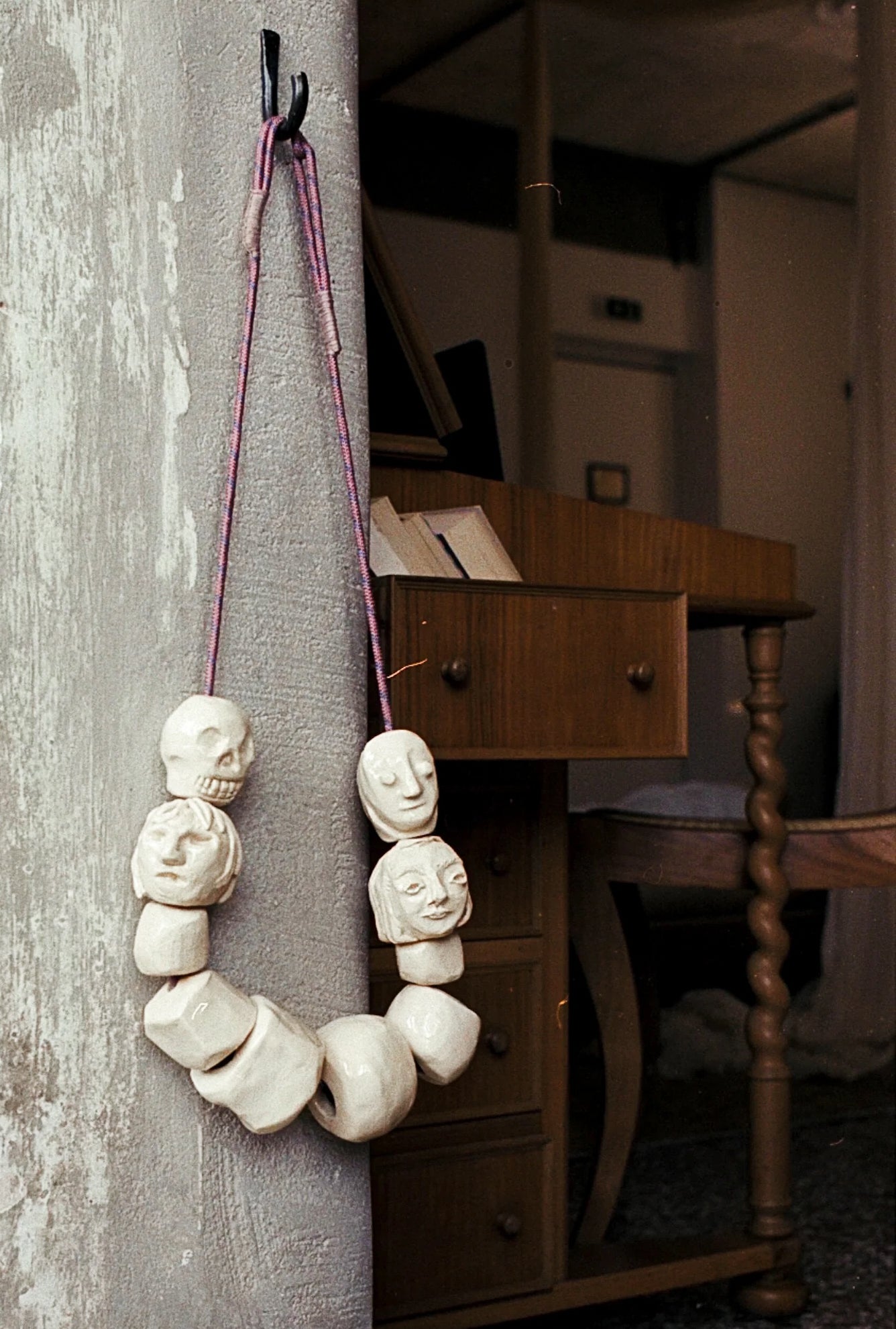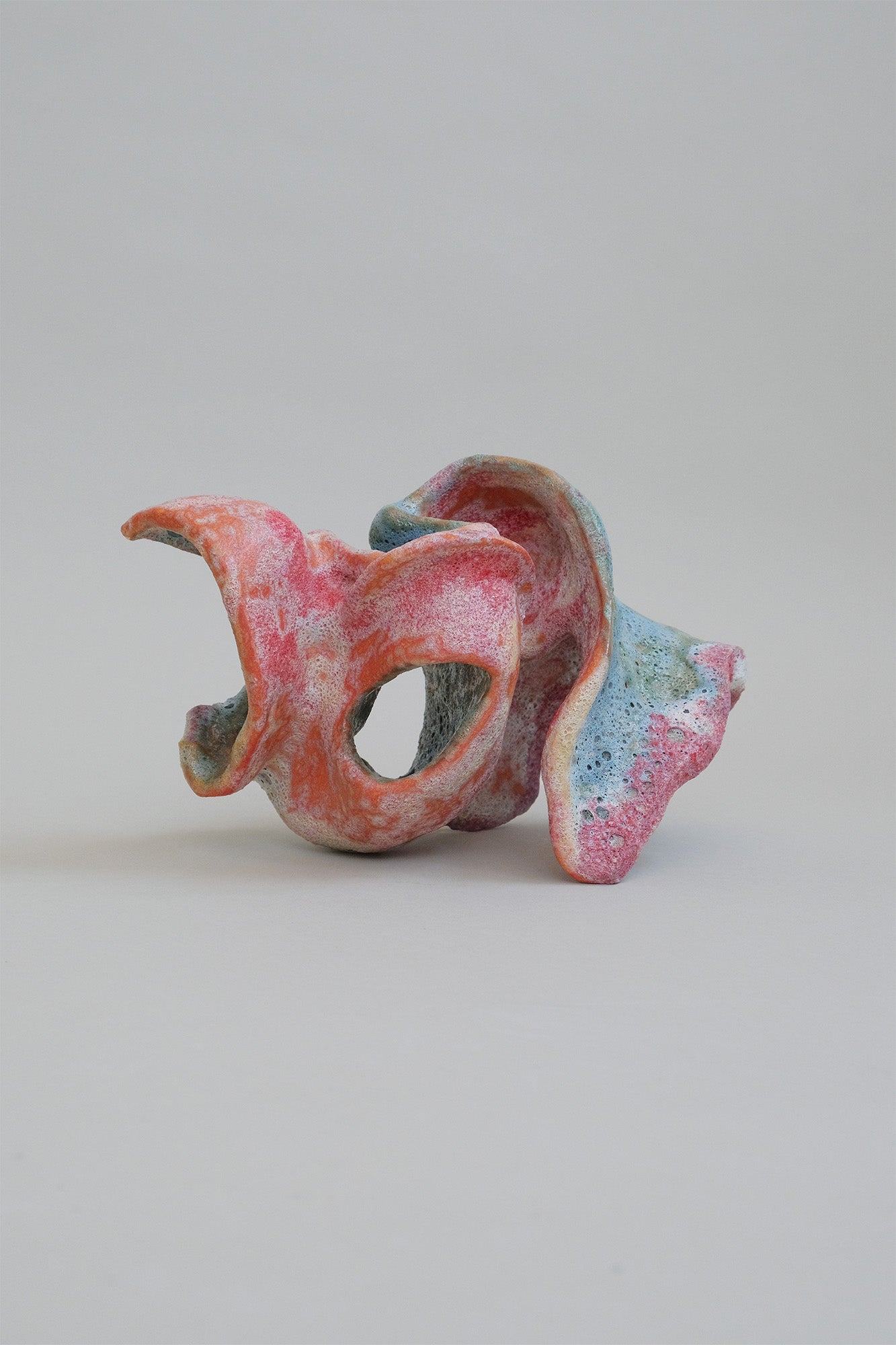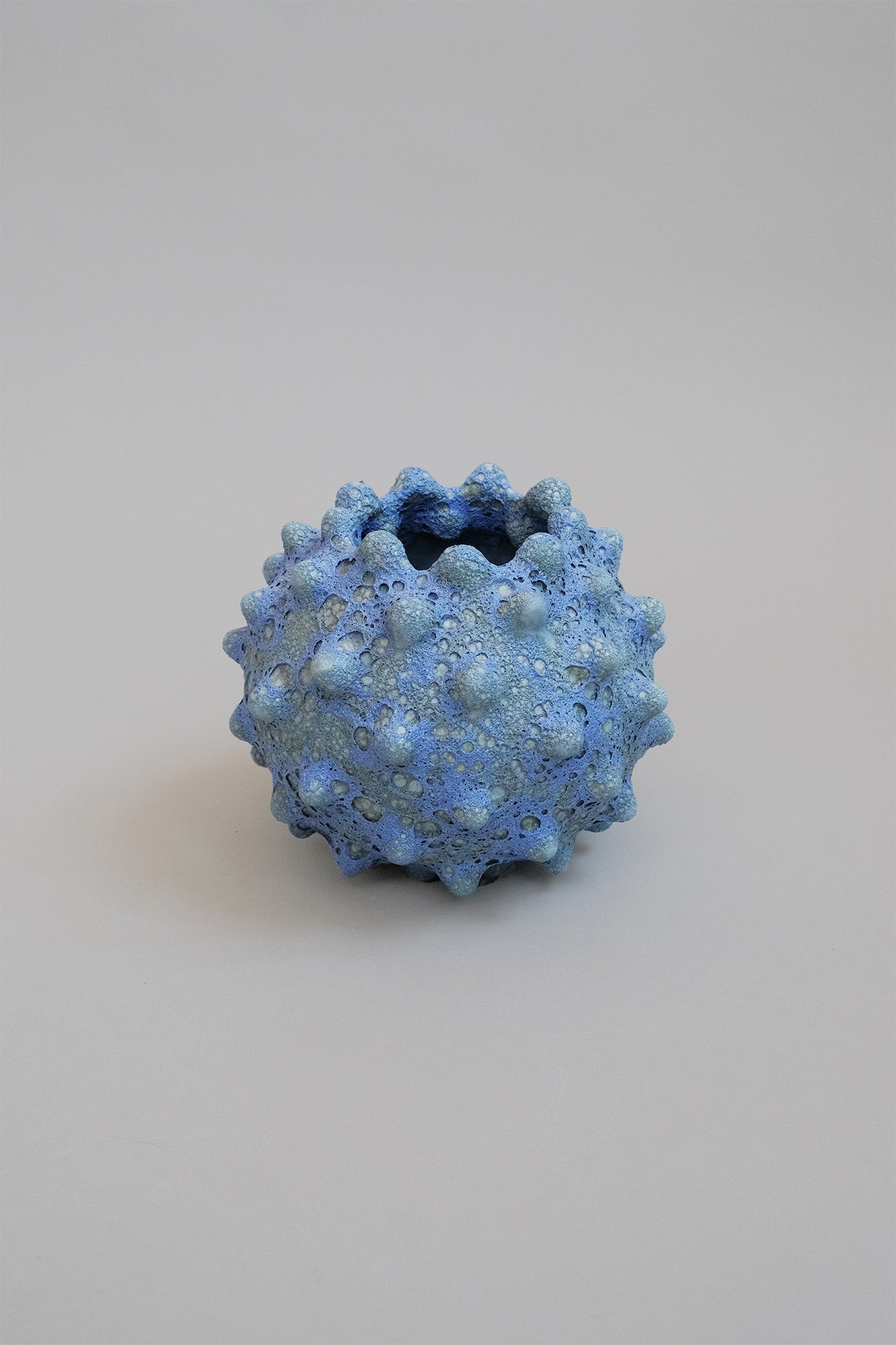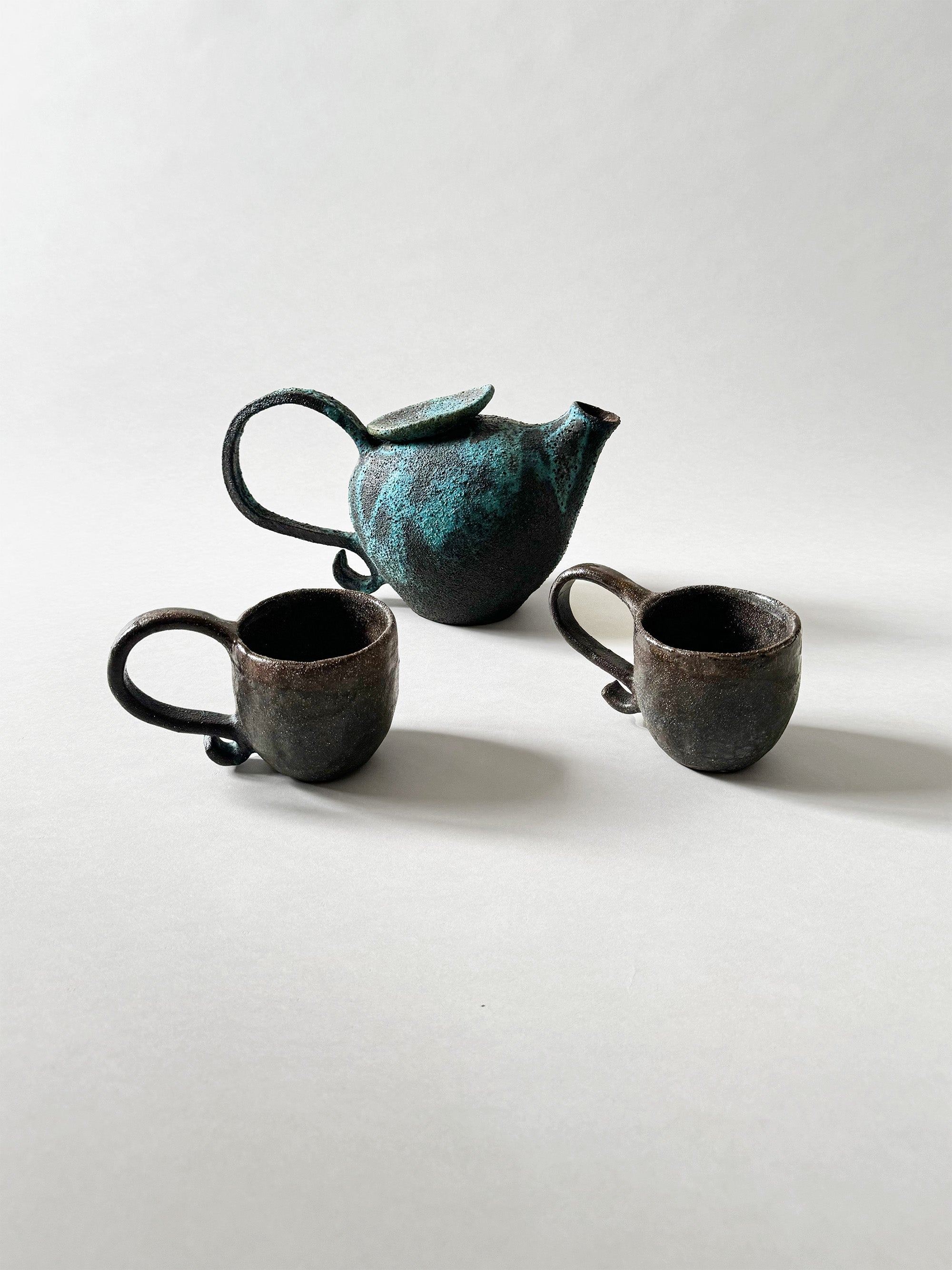THE STOMATA VASE SERIES 2
The Stomata Series Vase #2 by Anna Karountzou meets traditional craftsmanship with the natural elements.
Volcanic rocks collected on the island of Santorini by the artist herself and applied to the piece give it its speckled detailing.
This highly textured double vase has been hand crafted from beige stoneware clay. It makes up part of the Stomata Series, a collection of ceramics that showcase Anna's mastery of form as well as her deep connection to nature.
Internally glazed with a clear finish and fired at 1240°C, Vase #2 is water-tight and ready for showcasing floral arrangements, just as it can stand on its own as a work of art.
Athens-based ceramicist Anna Karountzou blends raw elegance with traditional craftsmanship. With a background in the conservation of artworks and antiquities, Anna brings an understanding of materials to moulding and handling clay. With absolute discipline and focus on detail, she creates her own glazes favouring the tactile and functional aspects of the craft. Her one-of-a-kind, hand-thrown pieces draw inspiration from places she feels connected to, and pay homage to the natural world with a contemporary feel.
Inspired by nature, Anna is obsessed with the marks of time, evidently present in the essence of corrosion that her ceramics exude, seeking the nostalgia of the old. Formed by traditional hand-building techniques such as the coiling method, her works are each made by hand, and constitute entirely bespoke pieces where no one is the same. All pots have been fired at a high temperature to ensure their durability.
Lorem ipsum, or lipsum as it is sometimes known, is dummy text used in laying out print, graphic or web designs. The passage is attributed to an unknown typesetter in the 15th century who is thought to have scrambled parts of Cicero’s De Finibus Bonorum et Malorum for use in a type specimen book.
Lorem ipsum, or lipsum as it is sometimes known, is dummy text used in laying out print, graphic or web designs. The passage is attributed to an unknown typesetter in the 15th century who is thought to have scrambled parts of Cicero’s De Finibus Bonorum et Malorum for use in a type specimen book.
We recommend hand-washing this piece and drying with a soft cloth to ensure its longevity and appearance.




